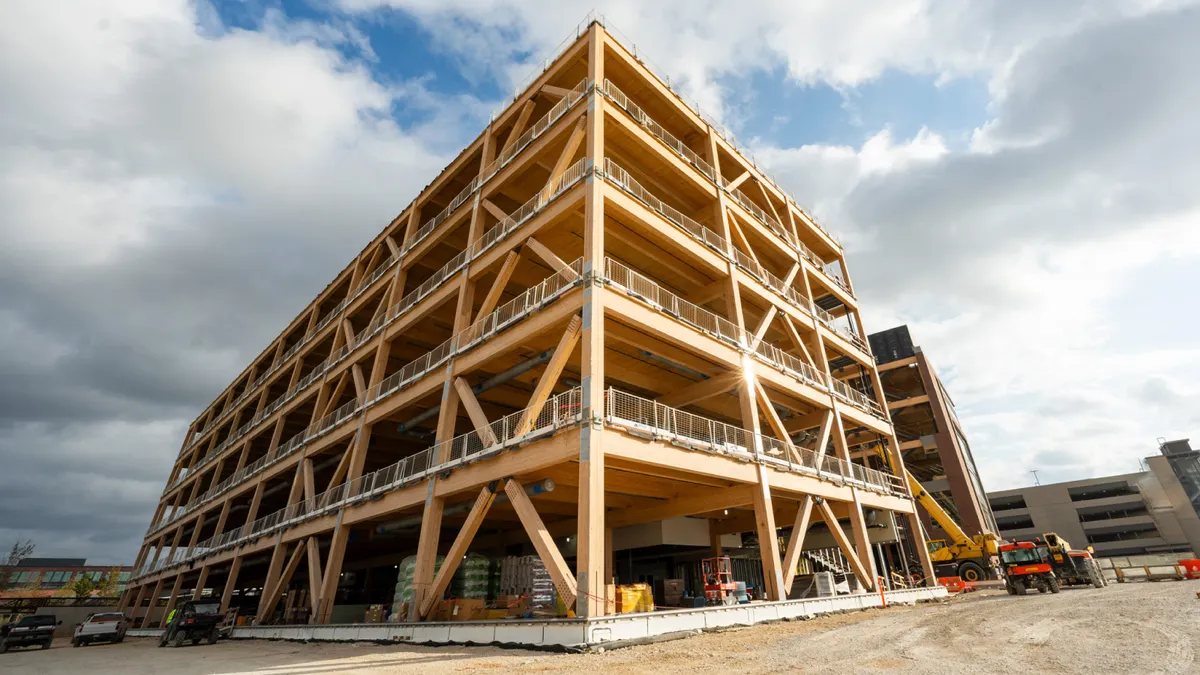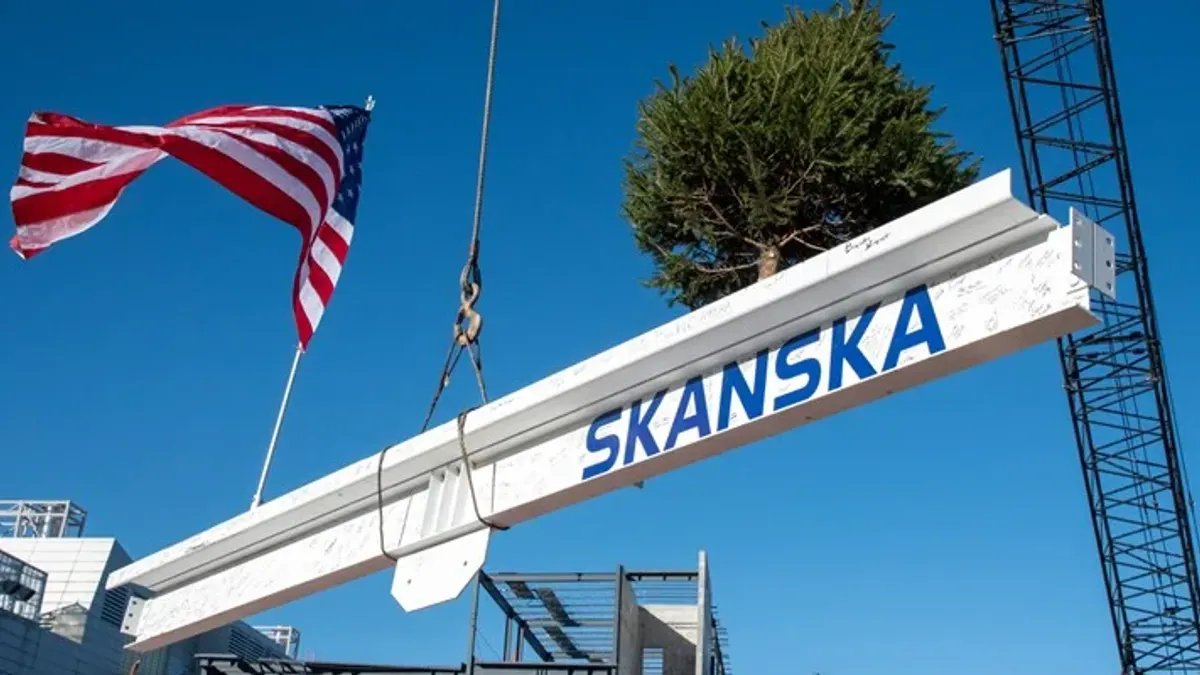Chris Coleman is partner-in-charge of accountancy RubinBrown's Construction Services Group. Opinions are the author’s own.
For years, contractors have had to make long-term decisions under short-term tax rules that could change with the next budget deal. While a future Congress could make changes, the One Big Beautiful Bill Act, or OBBBA, is a significant budget and tax bill that ends that uncertainty for the foreseeable future.

The law makes permanent several tax policies that construction firms have come to rely on, even though they were previously temporary in nature. Now, contractors know what rules they’ll be operating under for the next several years. For an industry built on long project timelines and thin margins, stability is worth as much as any new incentive.
This new-found certainty is particularly relevant in the remaining months of 2025. Now, decisions made before year-end can have long-term effects on cash flow, project pricing and capital budgets — potentially giving smart operators a leg up. In other words, during the balance of the fourth quarter, construction firms can use the OBBBA’s changes to their advantage to lock in lasting cash-flow gains for 2025 and beyond.
Here are four ways that construction firms should be taking advantage of the new tax bill ahead of 2026.
Leverage the new-found permanence
OBBBA now enables construction firms to restructure their purchasing plans to improve cash flow. For example, OBBBA locks in 100% bonus depreciation for qualifying property placed in service after Jan. 19, 2025. By restoring the immediate write-off that had been phasing out since 2023, construction firms have more time to purchase equipment, vehicles and software, knowing that in future years deductions will continue to boost cash flow by reducing taxable income.
The act also makes the 20% Qualified Business Income deduction permanent for pass-through entities, keeping tax rates for many construction companies competitive with corporations. And by restoring the business interest limitation to 30% of adjusted taxable income calculated on an EBITDA basis, the law eases pressure on leveraged firms facing higher borrowing costs.
Taken together, construction firms have more flexibility to reexamine their long-term investment strategies to optimize cash flow and reassess their capital investments. Instead of holding off on asset purchases or equipment upgrades, firms can think long-term, knowing the deduction rules aren’t set to change midstream in the near-term.
Lock in wins before Dec. 31
Other OBBBA provisions offer opportunities for construction and real estate businesses to potentially reduce fourth quarter estimated tax payments:
- Qualified Production Property expenses. Taxpayers building qualified manufacturing or processing facilities can deduct 100% of costs if construction begins between Jan. 20, 2025 and Jan. 1, 2029, and the structure is placed in service before 2031. As an added potential bonus for contractors, this accelerated depreciation on otherwise long-lived assets could spur construction in these industries.
- R&D expenses. Design and engineering firms can again fully deduct domestic research costs in the year incurred. Those who capitalized expenses for 2022 through 2024 can write off remaining balances now.
- QBI deduction. The 20% pass-through deduction is permanent, giving contractors long-term rate certainty.
- Interest deduction. The 30% EBITDA limit expands the amount of interest that can be deducted, improving flexibility for debt-financed equipment or property.
- Completed-contract accounting. Starting in 2026, most multi-unit residential projects can defer taxable income until completion rather than reporting it as work progresses.
Each benefit depends on timing and documentation. Contractors should consult with their tax advisors for advantages specific to their own circumstances.
Grab hold of disappearing incentives
While OBBBA creates long-term stability, it also accelerates the end of some popular credits and deductions — including several that construction firms in the green-energy industry should be aware of.
The energy-efficiency incentives under Sections 45L and 179D now have a June 30, 2026 cutoff. Contractors working in residential or commercial energy upgrades should plan to start qualifying projects as soon as possible to preserve eligibility.
The act also introduces new rules around qualifying employee overtime pay from 2025 through 2028. It’s modest in scope and designed to benefit workers directly but adds new W-2 reporting requirements that employers must prepare for.
Review contracts and assets now
Year-end is the time to turn policy into planning. The best opportunities under OBBBA require active review of contracts, assets and project timing — not just awareness.
Contractors should start by reviewing their equipment lists and breaking down project costs to ensure they’re claiming every dollar of available bonus depreciation. R&D-heavy firms should look back to 2022 to 2024 filings and identify any expenses that can be taken as immediate deductions.
Builders taking on residential projects in 2026 should evaluate which contracts qualify for completed-contract accounting and model the effect on cash flow.
And for everyone, it’s time to check payroll and reporting systems against the new overtime pay reporting rules.
Ignoring these changes until tax season could create unexpected hassle or costly corrections later.
A short window, long consequences
At the macro level, OBBBA is expected to expand business investment in 2026 and 2027. The Congressional Budget Office projects a $4.1 trillion increase in federal deficits over the next decade as a result of the bill, with much of the stimulus hitting within the next three years. That may support upcoming construction growth, but it also signals tighter fiscal conditions later — another reason to bank cash-flow advantages now while rates remain favorable.
The One Big Beautiful Bill Act is, in many ways, a return to normalcy for an industry that’s spent a decade planning around uncertainty. The rules are clear and incentives are in place. What matters now is execution before the end of the year





















